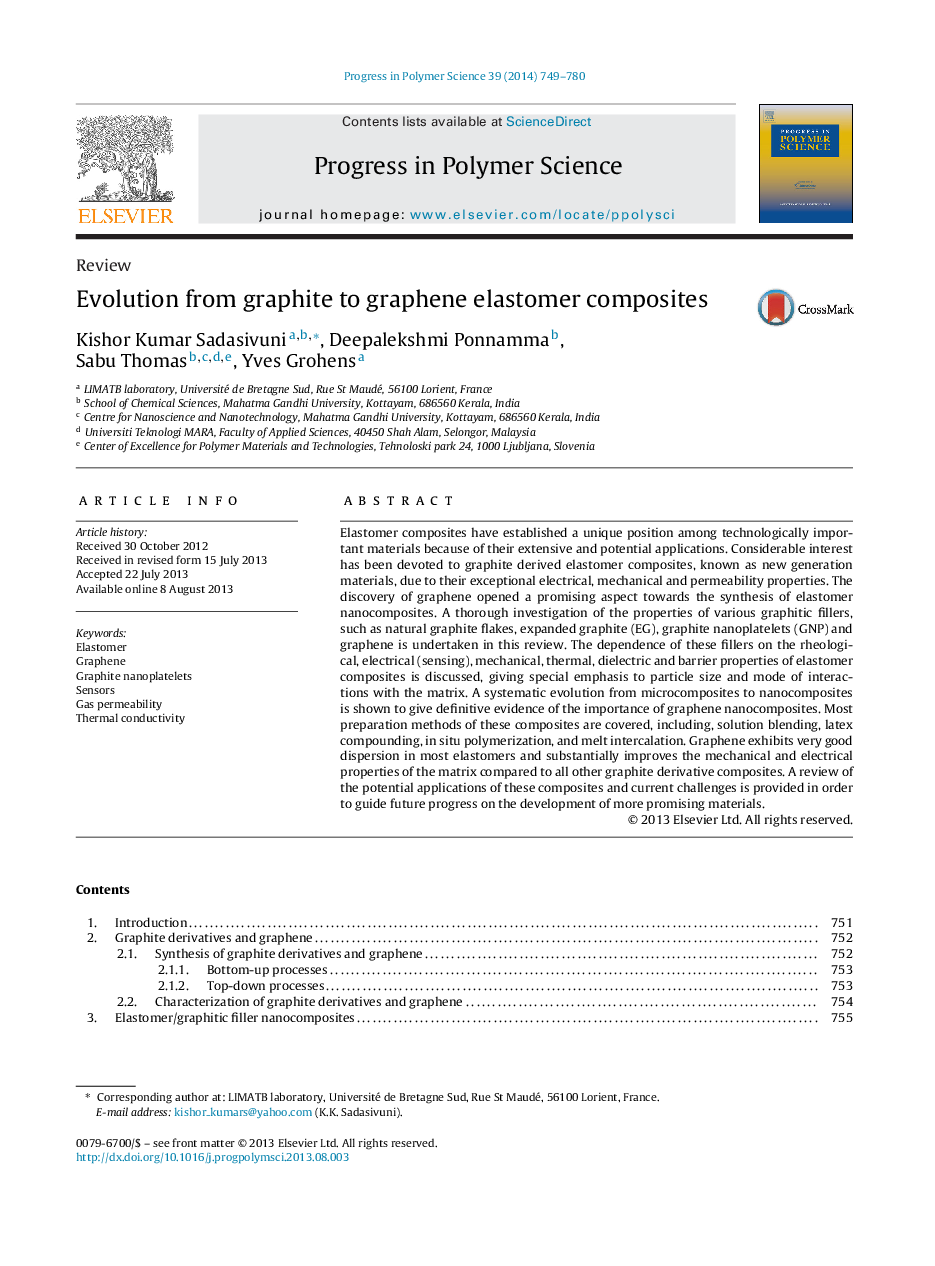| Article ID | Journal | Published Year | Pages | File Type |
|---|---|---|---|---|
| 5208303 | Progress in Polymer Science | 2014 | 32 Pages |
Abstract
Elastomer composites have established a unique position among technologically important materials because of their extensive and potential applications. Considerable interest has been devoted to graphite derived elastomer composites, known as new generation materials, due to their exceptional electrical, mechanical and permeability properties. The discovery of graphene opened a promising aspect towards the synthesis of elastomer nanocomposites. A thorough investigation of the properties of various graphitic fillers, such as natural graphite flakes, expanded graphite (EG), graphite nanoplatelets (GNP) and graphene is undertaken in this review. The dependence of these fillers on the rheological, electrical (sensing), mechanical, thermal, dielectric and barrier properties of elastomer composites is discussed, giving special emphasis to particle size and mode of interactions with the matrix. A systematic evolution from microcomposites to nanocomposites is shown to give definitive evidence of the importance of graphene nanocomposites. Most preparation methods of these composites are covered, including, solution blending, latex compounding, in situ polymerization, and melt intercalation. Graphene exhibits very good dispersion in most elastomers and substantially improves the mechanical and electrical properties of the matrix compared to all other graphite derivative composites. A review of the potential applications of these composites and current challenges is provided in order to guide future progress on the development of more promising materials.
Related Topics
Physical Sciences and Engineering
Chemistry
Organic Chemistry
Authors
Kishor Kumar Sadasivuni, Deepalekshmi Ponnamma, Sabu Thomas, Yves Grohens,
